PROTECT YOUR DNA WITH QUANTUM TECHNOLOGY
Orgo-Life the new way to the future Advertising by AdpathwayClematis is a long-lived garden beauty with showy blooms that vary from large and open starry flowers to nodding bells. With over 250 species and thousands of cultivars, varieties boast numerous colors, heights, foliage, and bloom times. In striking hues like violet, blue, scarlet, blush pink, and white, there’s a unique clematis variety for every sunny garden corner.
All clematis are eye-catching, but unique varieties will stop you in your tracks. Distinct flower shapes, colors, and patterning bring undeniable style. Given vertical supports, the vigorous vines climb with unparalleled seasonal interest. Plant the long-lasting perennials this season and enjoy them for years to come as the show gets even better.
Armandii Snowdrift
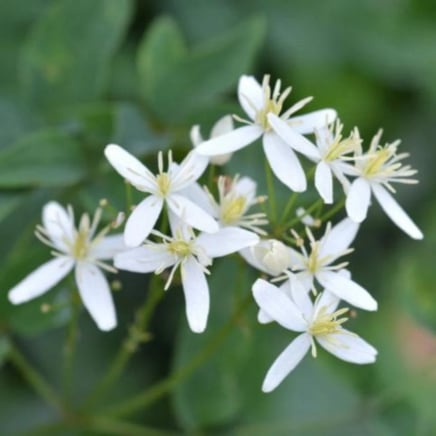
Armandii Snowdrift Clematis
Dr. Ruppel Clematis
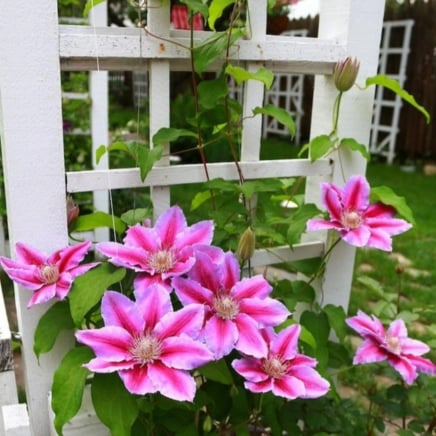
Ina Wall Trellis Large
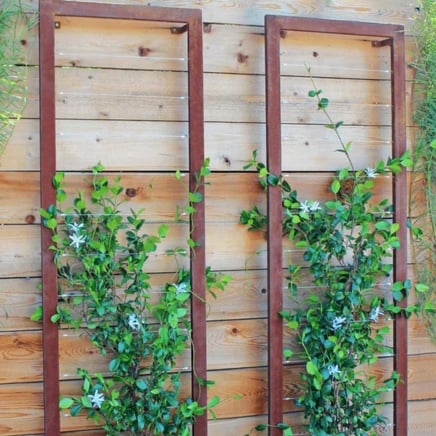
About Clematis
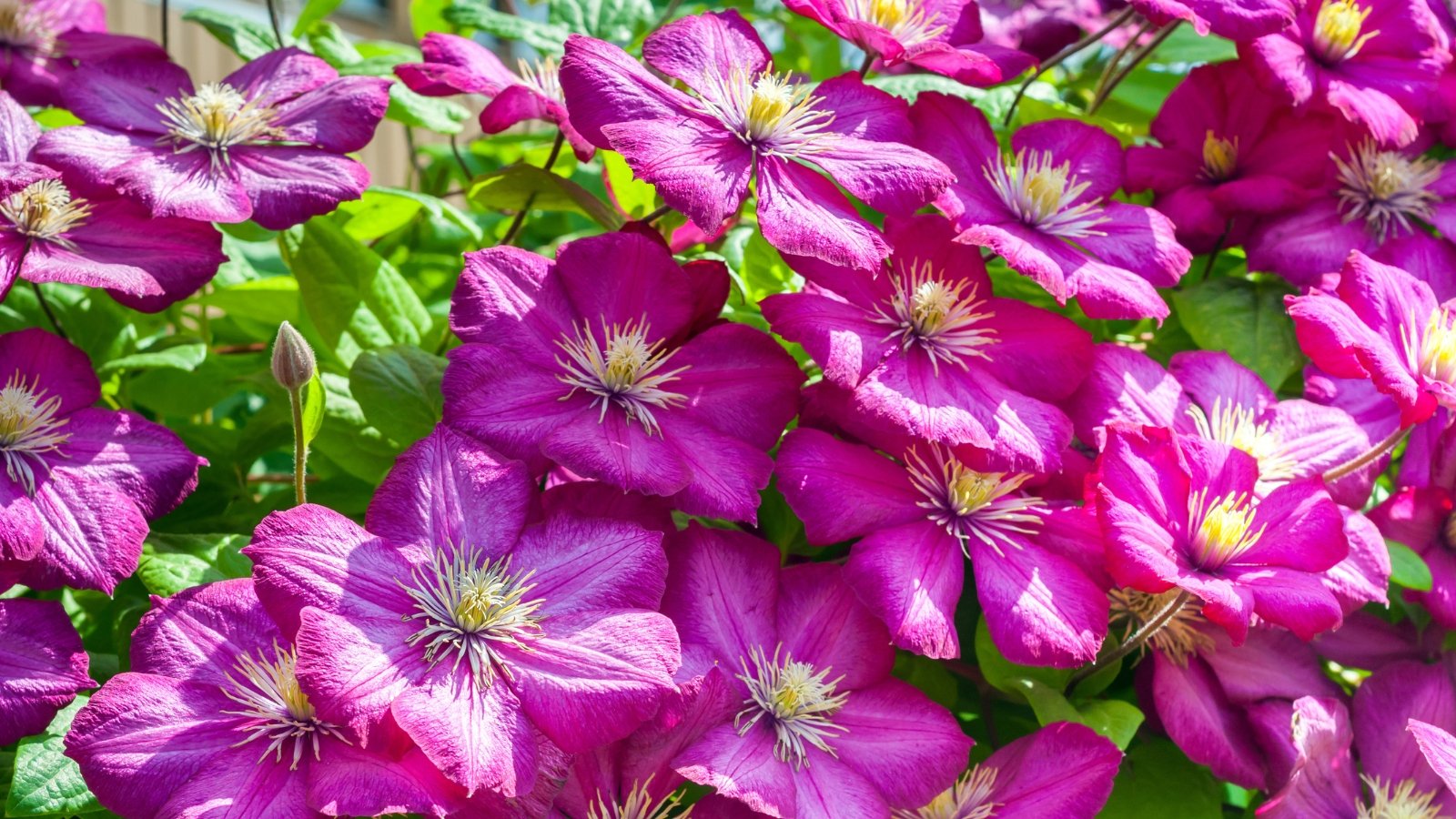 A bounty of blooms appears after seasons of quiet root work.
A bounty of blooms appears after seasons of quiet root work.Given the best siting and cultural conditions, clematis are mostly low-maintenance perennial vines. In the first two seasons, they may “sleep” and “creep” as their extensive roots develop. By the third growing season, clematis “leaps” into graceful, full foliage with abundant blooms. Grow clematis vertically for high visual interest and in pots as featured specimens.
There’s another adage when it comes to siting: “head in the sun, feet in the shade.” This refers to leafy stems and foliage needing sunny conditions, while roots rely on cooling shade and moisture. Protect roots with a low-growing ground cover or mulch layer for temperature regulation and moisture retention. Situate the vines in full sun (six or more hours) to partial shade (four or more hours), with protection from intense afternoon sun in the summer.
There are different groups of clematis that classify growing and flowering characteristics. Early-flowering cultivars show color in spring and bloom on old wood (the previous season’s growth). Large-flowered hybrids begin flowering in early summer from buds set on old wood, and also repeat flower on new growth. Late-flowering types bloom on the current season’s new growth in the summer, usually on the top two to three feet of the plant.
Clematis benefits from pruning according to whether they bloom on old wood, new wood, or both. Pruning woody stems helps increase air circulation, promote new growth, and encourage reblooming.
Optimal growing conditions include:
- Planting in full sun with protection from direct afternoon rays
- Ample air circulation between plants and surrounding structures
- Consistently moist, well-draining soils
- Avoiding waterlogged or drought conditions
- Pruning vines according to group
‘Jackmanii’
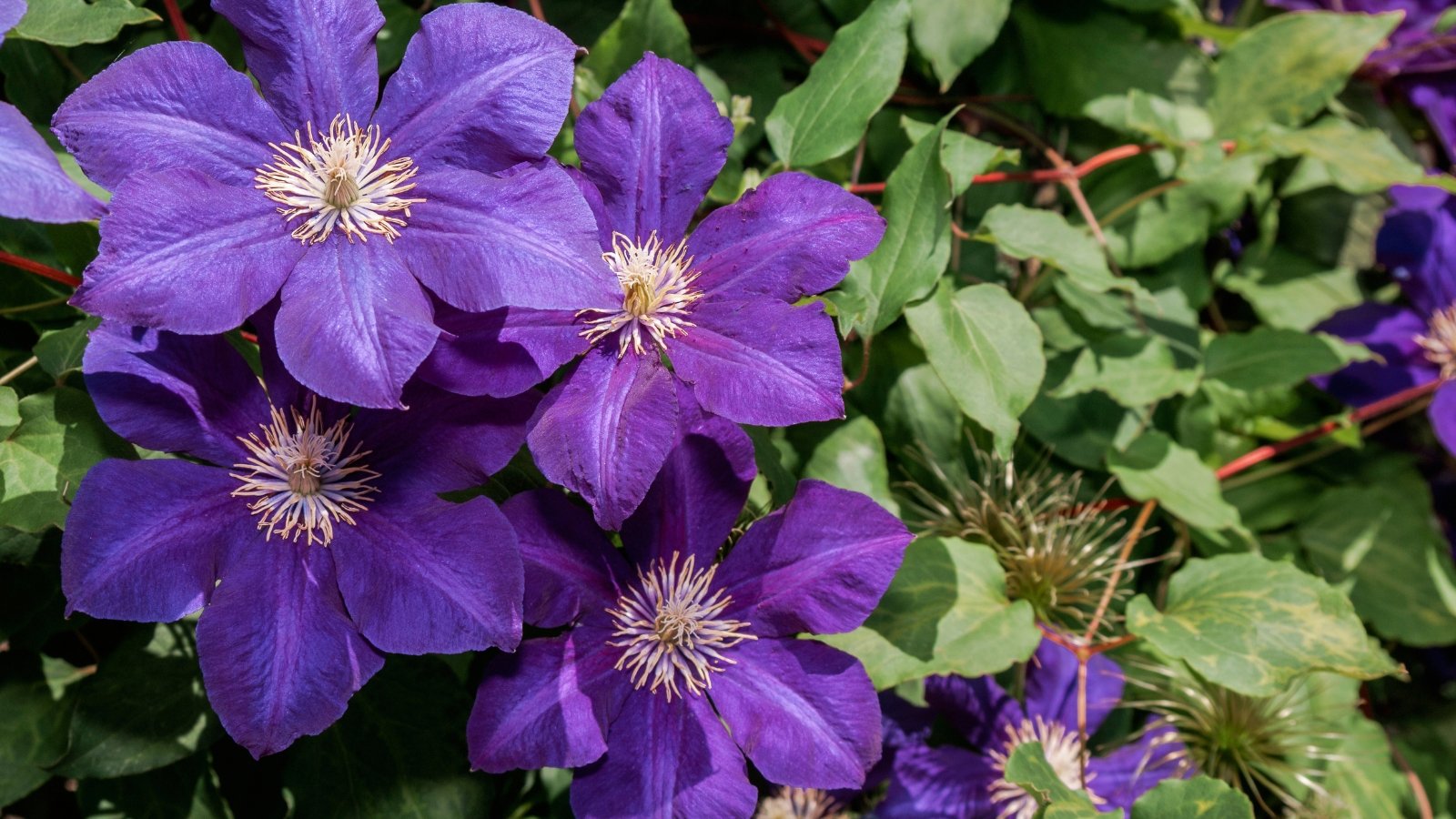 Vigorous growth means a show that lasts all season.
Vigorous growth means a show that lasts all season.We kick off the list of showy clematis varieties with a classic, ‘Jackmanii,’ a favorite for its large, late-season violet-purple blooms. The late 1800s heirloom sets the standard for other large-flowered varieties with full flower coverage later in summer.
This Royal Horticultural Society Award of Garden Merit recipient boasts vigorous performance and a show-stopping display, to the delight of pollinators. Flowers measure six to seven inches in diameter and appear freely throughout the season after the initial flush.
‘Jackmanii’ is a group 3 clematis, meaning it flowers late in the season on new growth. Cut stems back hard to a healthy bud before new growth emerges in spring (to about two feet high). New shoots develop quickly to brim with blooms. This is one of the later specimens of the season, with a long bloom time.
Look to ‘Jackmanii Superba’ for even larger royal purple flowers. Petals are broader and cover the stems for much of summer. Grow the beauty with climbing roses for a striking blended arrangement.
‘Taiga’
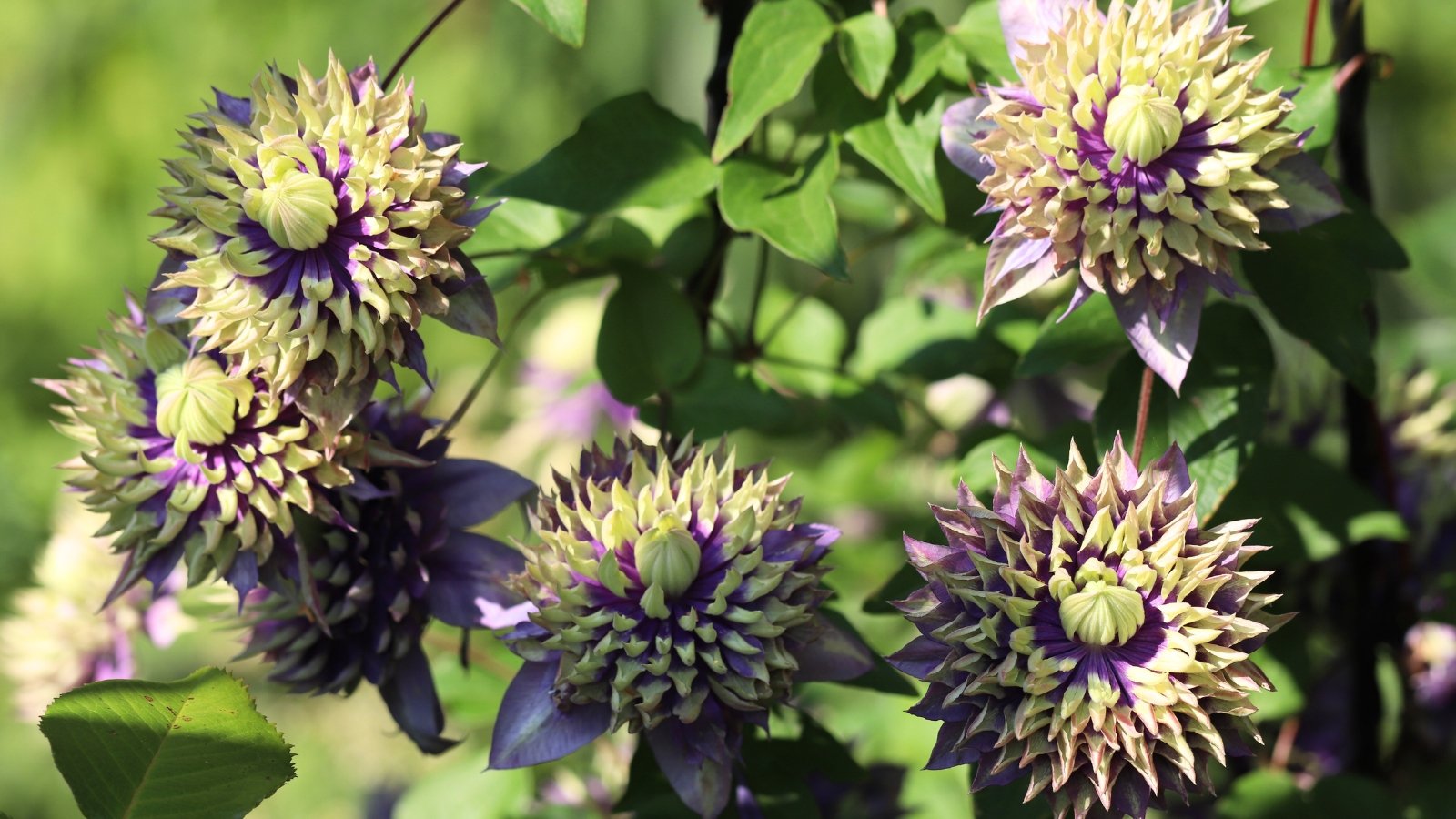 Each flower shows off different stages of delicate unfolding beauty.
Each flower shows off different stages of delicate unfolding beauty.‘Taiga’ is a spectacularly unique clematis variety with lush, fully double petals. The wild blooms are purple-blue with lime tips. It mixes up what we typically envision in the vine’s flowers. The outer purple petals open first, followed by smaller central sepals in decadently stacked layers.
Since the blooms occur simultaneously in different stages of development, the flowers are multifaceted on the vine. ‘Taiga’ is a 2017 Chelsea Flower Show introduction and award winner as the first of its kind in terms of floral structure and color.
‘Taiga’ reblooms with light pruning after the initial flush. Trim stems to a healthy bud just below the spent blooms. Feature the unusual variety in a pot for up-close enjoyment.
‘Josephine’
 This beauty shows off twice, blooming in spring and fall.
This beauty shows off twice, blooming in spring and fall.‘Josephine’ is pretty in fully-petaled pink. Another Chelsea Flower Show standout, the unique clematis variety resembles a dahlia on the vine. The five-inch blooms have large pinky mauve outer petals that surround layers of smaller ones for an overall fluffy, flared look.
‘Josephine’ is an early-season hybrid with a repeat bloom in late summer into early fall. It’s in group 2 with spring blooms on old wood (last season’s growth) and a rebloom on new growth.
‘Stand By Me’
 Compact and bushy, perfect for pots or garden fronts.
Compact and bushy, perfect for pots or garden fronts.‘Stand By Me’ is a unique clematis variety with a bushy form and highly ornamental nodding blue flowers. This one is non-vining. The herbaceous type dies back completely to the ground in winter and reemerges in spring.
In addition to its compact, leafy form, it has bell-shaped blooms that suspend from the tips of stems. ‘Stand by Me’ is beautiful in containers or in the mid-front of the border. Support the wiry stems with lower-growing plants or with tripods or cages.
In late winter or early spring, before new growth emerges, cut the old growth back to within several inches of the soil surface. New growth develops for flowering in late spring through summer. In addition to the blue hybrid are ‘Stand By Me Pink’ and ‘Stand By Me Lavender.’
‘Dr. Ruppel’
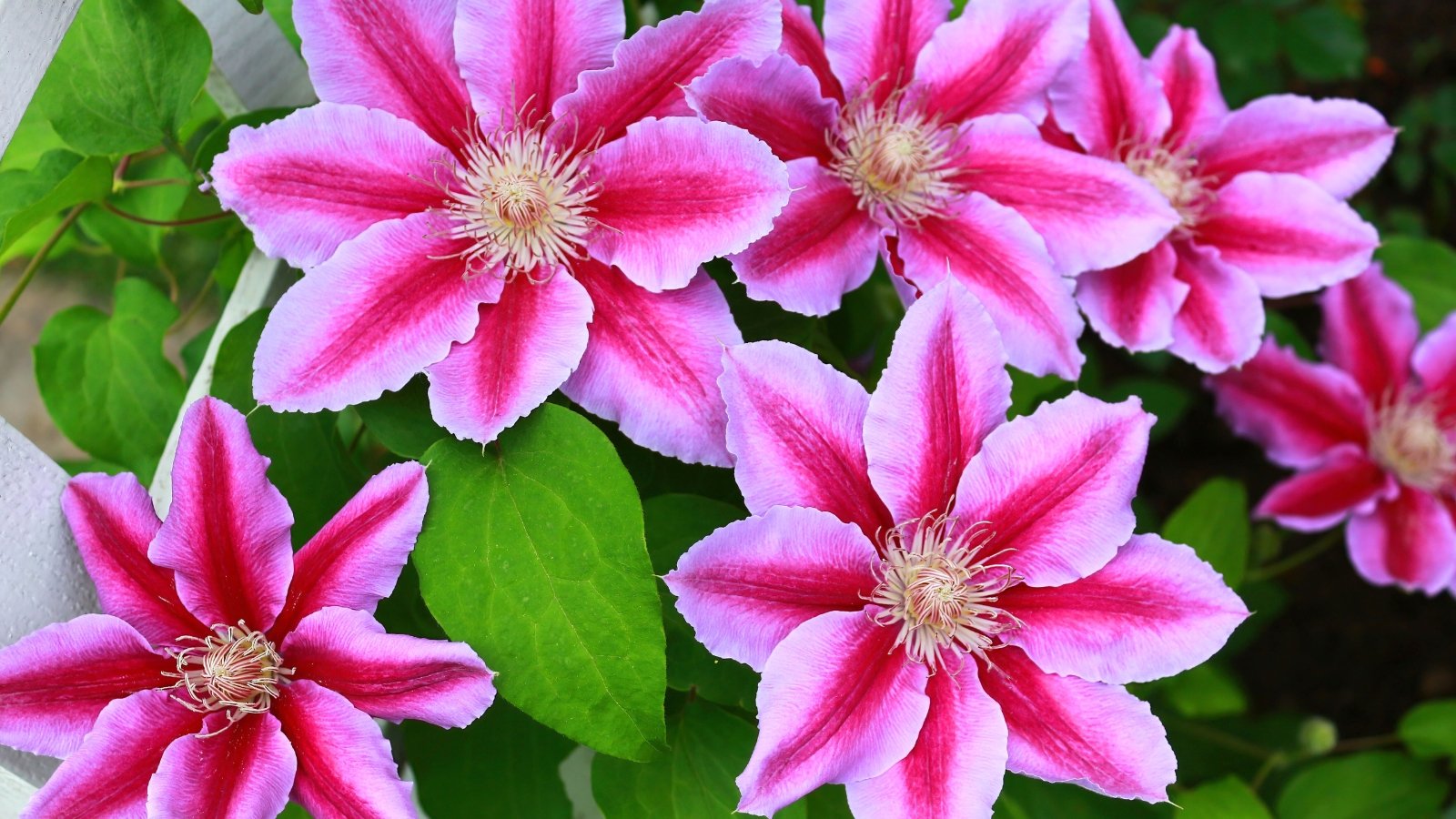 Big swirling flowers fade to lovely lavender with time.
Big swirling flowers fade to lovely lavender with time.‘Dr. Ruppel’ brings high color with large petals in soft pink with central ribbons of magenta. The swirling blooms are eye-catching from a distance and captivating up close. The lightly ruffled flowers span eight inches across. As they age, they take on lavender shades.
Let the vigorous vines climb along the porch railing or lightpost as an inviting welcome to visitors and a big boost in curb appeal. ‘Dr. Ruppel’ shows a heavy bloom flush in late spring to early summer, followed by another round of color on new growth late in the season.
The compact maximum height and loads of the showy blooms of this clematis variety make it a fit across garden scales, including growing it in pots and containers.
‘Snowdrift’
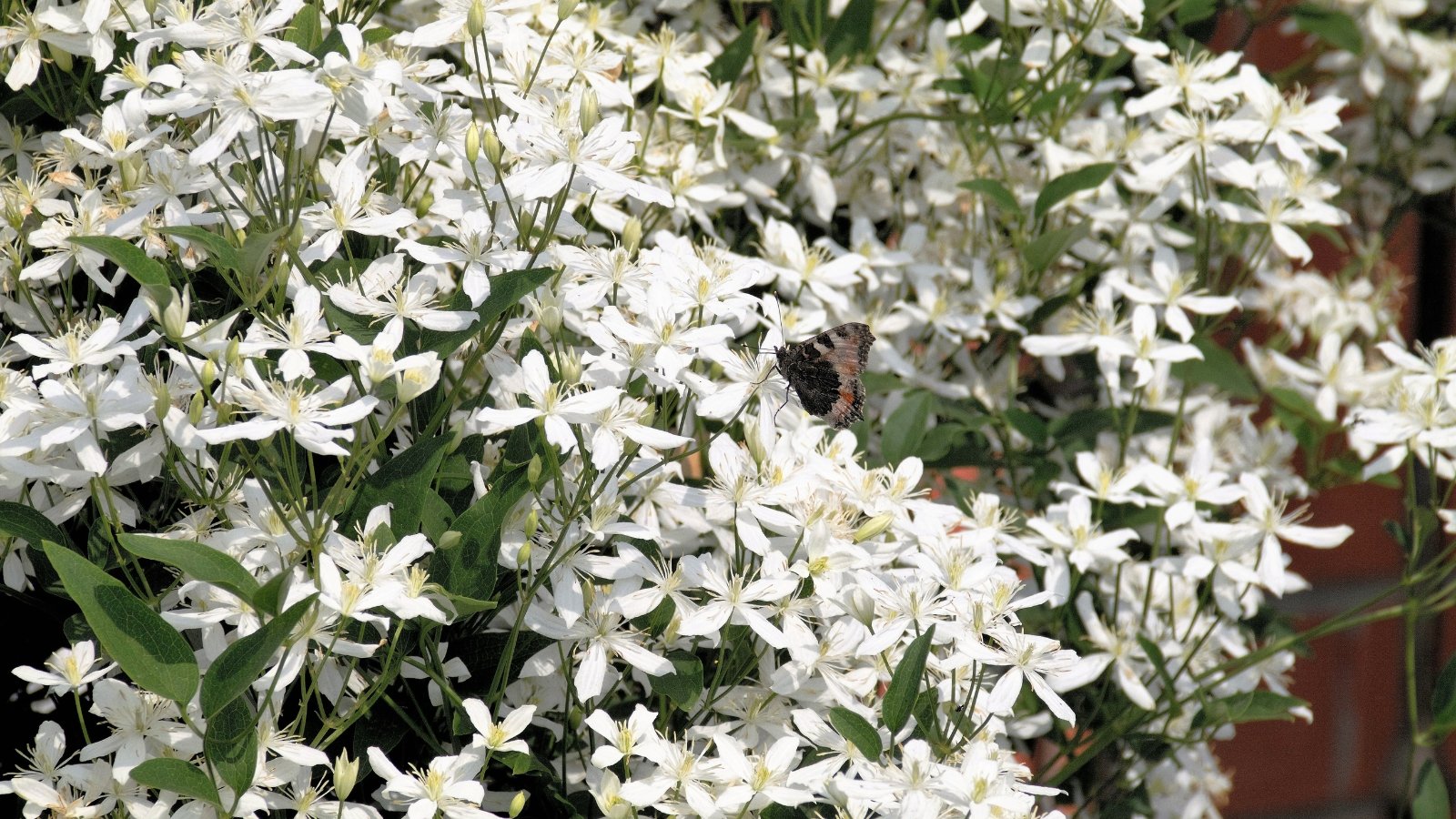 Early blooms attract pollinators when few others are flowering.
Early blooms attract pollinators when few others are flowering.‘Snowdrift’ is an armandii with cascades of snowy white blooms on evergreen foliage. While the flowers reign supreme, the dark green, glossy leaves are attractive even when the vines aren’t in bloom. Evergreen clematis provides all-season appeal, even in winter when the landscape is quiet. They bring lasting vertical interest to arches, trellises, and arbors as the lengthy vines flourish.
‘Snowdrift’ bears clusters of narrow-petaled, fragrant white flowers with creamy yellow centers in the spring. While the flowers are smaller than large-flowered varieties at two to three inches, they’re more abundant and create a sweet blanket of blossoms. Pollinators visit for nectar and pollen and appreciate the early resources; the clematis starts flowering in late winter to early spring.
C. crispa
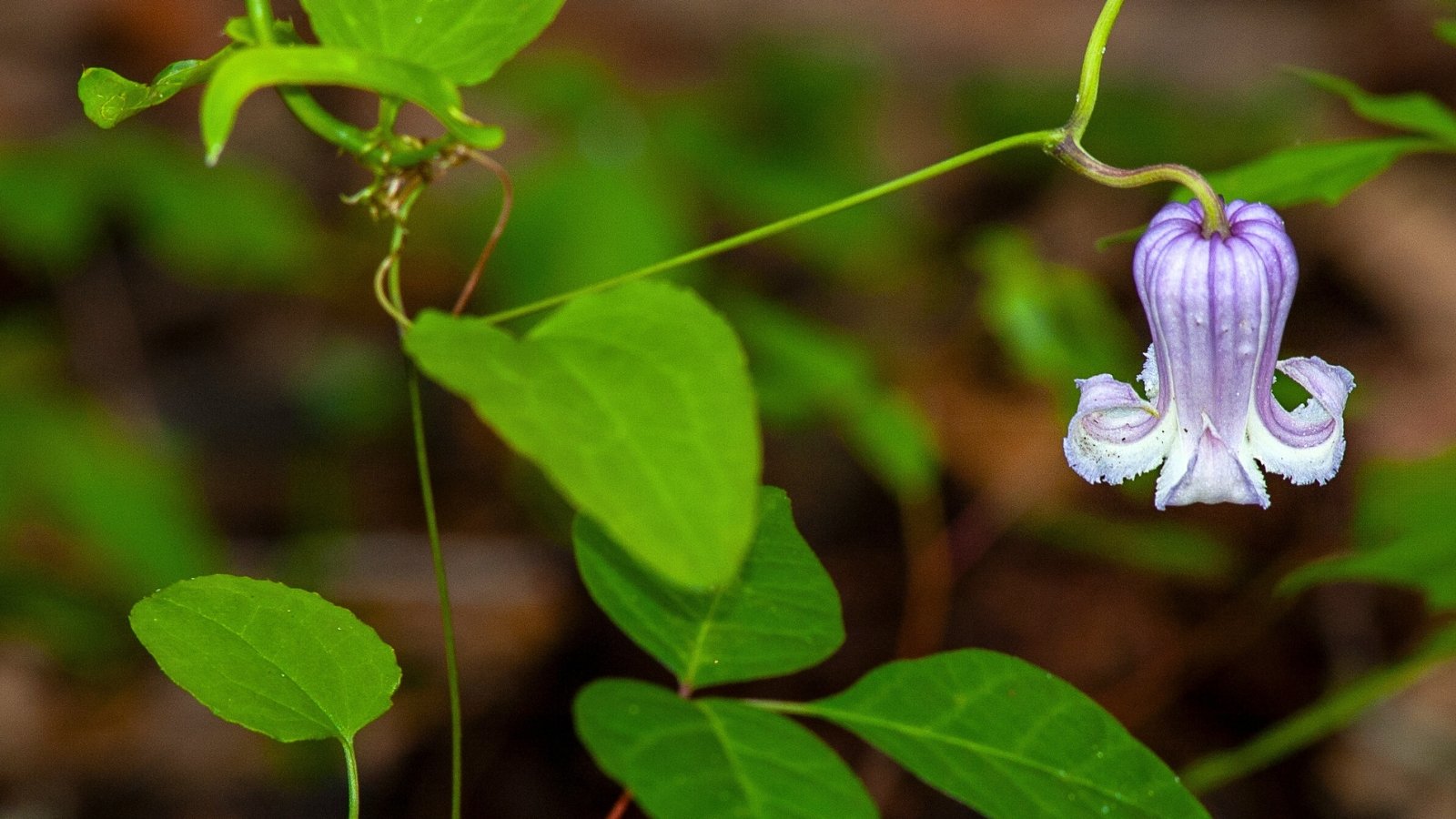 Bell-shaped blooms offer a delicate springtime charm.
Bell-shaped blooms offer a delicate springtime charm.Clematis crispa is a southeastern U.S. native species with a showy and unique clematis bloom. Tight bell-shaped blooms flower in the spring and extend the interest with seedheads in the fall. The bells occur in a range of pastel shades from pinky white to purple. Petals (actually recurved sepals) roll back distinctively and have lightly ruffled edges.
The delicate blooms of this species clematis are a specialty to behold. For other native species, look to C. hirsutissima (hairy clematis) in the Western region and C. addisonii (Addison’s) from Virginia. Virgin’s Bower (C. virginiana) is a heartily spreading vine native to the Eastern part of the country.
‘Princess Diana’
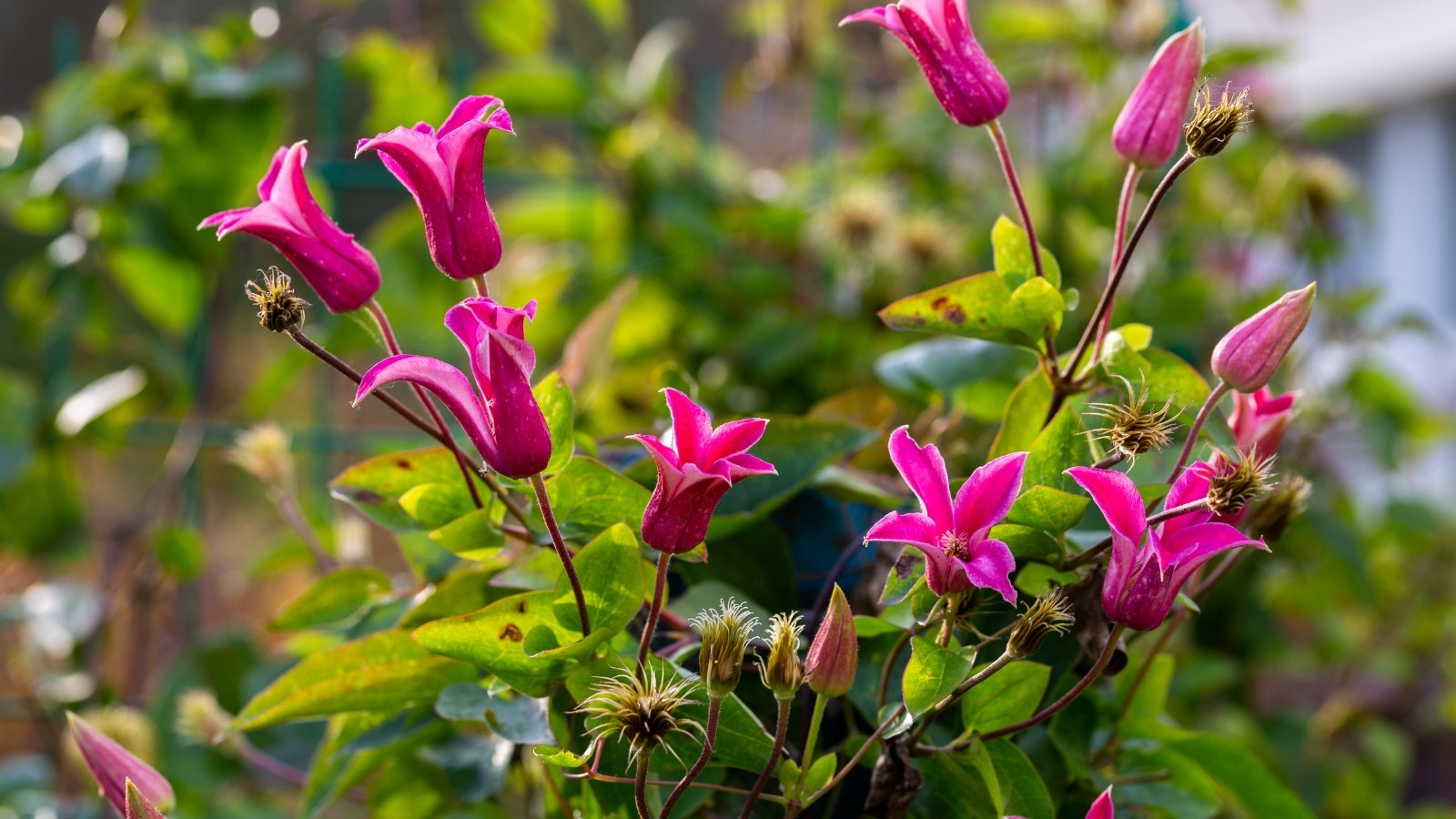 Small tulip blooms brighten up any leafy green backdrop.
Small tulip blooms brighten up any leafy green backdrop.‘Princess Diana’ graces with tulip-type blooms in rich pink. While the blooms are small, they’re abundant. The elegant two-inch “tulips” stand out for their form and color against the leafy backdrop. The upfacing blooms show off their sweet tones as petals lighten to whitish pink at their base.
For upright tulips in crisp white with a deep rose base, look to ‘Princess Kate.’ This award-winning introduction joins the regal lineage of the blooming vines with one-of-a-kind blossoms.
‘Westerplatte’
 Early blooms return late summer for a second colorful show.
Early blooms return late summer for a second colorful show.‘Westerplatte’ adds dramatic charm with velvety cerise-purple petals. Even the stamens of the prominent starry blooms are deep red. As they mature, petals show brighter red central bars. Edges take on blue tones for contrast among the simultaneous flowering.
The showy hybrid is in group 2, early-blooming on last season’s growth with a repeat late-summer bloom on new stems. Feature ‘Westerplatte’ in containers or other prominent locations to show off the luxe blooms.


 3 weeks ago
32
3 weeks ago
32





















 English (US) ·
English (US) ·  French (CA) ·
French (CA) ·